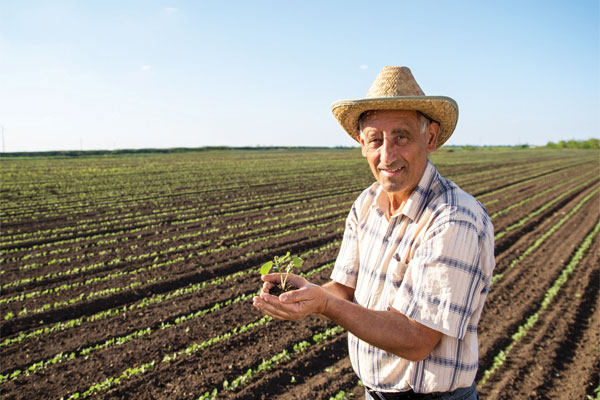Detox from GMOs
GMO stands for genetically modified organism. This is an organism that has had genetic material from a different species added to its own DNA. For example, a GMO eggplant (called Bt brinjal) contains a gene from a virus found in cauliflowers and genes from a particular bacterium. The rationalisation for this is to produce an eggplant that is more resistant to the diseases of mainstream agriculture. The driving purpose behind GMO development is to be able to patent a seed. By changing the DNA in this way, the seed becomes a “human invention” and thus the company that owns the patent collects royalties for its use, generally every season.
Some people mistakenly think genetic modification is the same as selective breeding, or cross-breeding practices. Just to clarify, this centuries-old practice is called hybridisation. While specific characteristics can be created in hybridised crops — for example, a range of particular qualities in broccoli — if hybridised crops are left to self-pollinate for a few generations, the original form of the species will arise again. A GMO is not reversible in this way because the foreign species’ genes have been patched into its DNA structure. The blueprint of the organism has been irreversibly altered, changing the pattern of its DNA, its future generations and potentially other organisms interacting with it. An in-joke of the food freedom movement is that GMO is actually an acronym for “God Move Over”.
Some people mistakenly think genetic modification is the same as selective breeding, or cross-breeding practices.
GMOs have been referred to as “Frankenfoods”. Like Dr Frankenstein, GMO patent holders — namely five transnational corporations — can have no real idea of the ramifications of what they are creating for us, nor for future generations. Despite being patentable “human creations”, GMOs have been able to fly under the bio-safety radar because they sufficiently “mimic life”. There have been virtually no human studies done on the effects of GMOs, even though people in 28 countries are growing, eating or wearing them. Thus, they have entered the food chain, in the food we eat, the food given to the animals and animal products we eat, and through many human and animal vaccinations. There is a litany of double-speak surrounding GMOs, which, to me, smells suspiciously like a corporate manipulation of life on Earth.
I have to admit my bias at this point. I have been anti-GMO since I first heard of them about 15 or so years ago. It intuitively just seems wrong to me. I knew about the phenomenon that is DNA and understood and witnessed propaganda and corporate capitalist control ever since studying political psychology at Melbourne University a decade before that. Thus, I concluded that GMO production was a profit-driven business, not a benevolent effort to “feed the world”, as the spin-doctors were saying.
Short-term studies in animals showed no safety issues; well, those done by seed companies’ laboratories didn’t. Independent short-term studies have shown potential pre-cancerous call growth, immune issues and brain, liver and testicle shrinkage. A two-year study of rats fed Roundup-ready corn, published in 2012 and led by Gilles-Éric Séralini, showed that experimental rats fed the GMO corn developed cancerous tumours significantly more regularly than the control rats.
Another issue is the radical increase in allergies to commonly modified foods (corn, soy, pineapples, strawberries, canola oil) — an increase simultaneous with the introduction of GMOs into the food system. Watch Robyn O’Brien’s compelling TED talk on this subject.
Vandana Shiva, speaking at the UPLIFT festival in December 2013, spelt out the situation clearly. GMOs use more pesticides than conventional foods and have worse production outcomes when considered with both conventional and holistic measures. From a more human perspective, GMOs have been implicated in the suicides of over 250,000 Indian farmers, who became financial hostages to the companies because they were forced to buy patented seed each year instead of collecting seeds as they had traditionally done for centuries.
GMO detox
To detox from GMOs, at the very minimum, avoid eating GMO crops. In Australia, these are cottonseed and canola (deriving from rapeseed) oils, soy (lecithin) and soybean oil, corn (maize) and sugar made from beets. If eating processed foods, read the ingredients label; if any of the previous plants are listed, most likely it contains a GMO. There are also GM animal products because animals were fed GMO feed. These are harder to identify because labelling laws don’t serve to inform consumers about foods containing or produced using GMOs. Agri-industry lobby groups are keeping this at bay throughout the world. The most certain way of avoiding GMOs is to buy certified organic (thus also avoiding pesticides) or grow your own from non-GMO seed.
GMOs are one cog in the agri-pharma-defence industrial wheel. Shiva states that the unsustainable agricultural system is responsible for 75 per cent of environmental and health issues. She says agriculture is a key driver of carbon emissions, and thus climate change, due to excessive transportation, tonnes of chemical fertilisers, herbicides and pesticides, and mostly because of the poor care of soils, leading to salinisation and desertification.
The corporate capitalist system is ingrained in our lives and minds. Shiva suggests we need to “detox our minds” from the dross that the corporate “unhuggable ghosts” market to us daily. She suggests seeking other learnings: learn from nature and farmers; get involved in healthier production processes, such as farmers’ markets and community gardens, to cultivate hope and community and to develop personal and social consciousness.
Detoxing from GMOs is a two-step approach. First, refuse them. Second, co-create a diverse, whole, local, seasonal and communal food system that respects the Earth that grows it.








